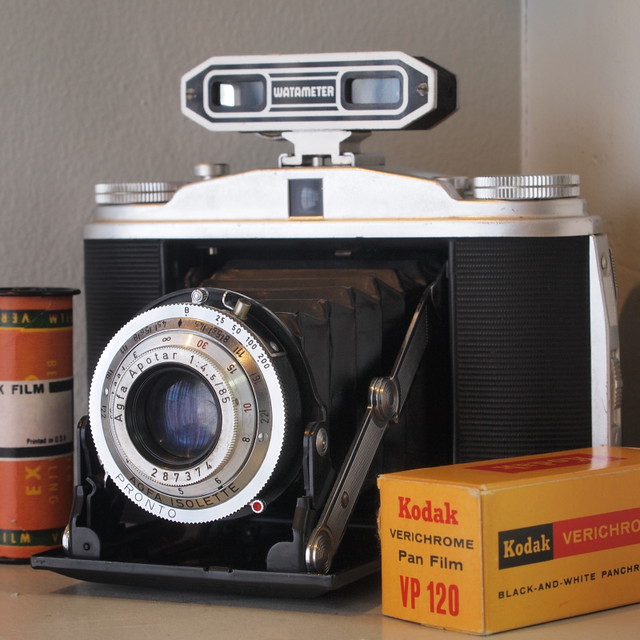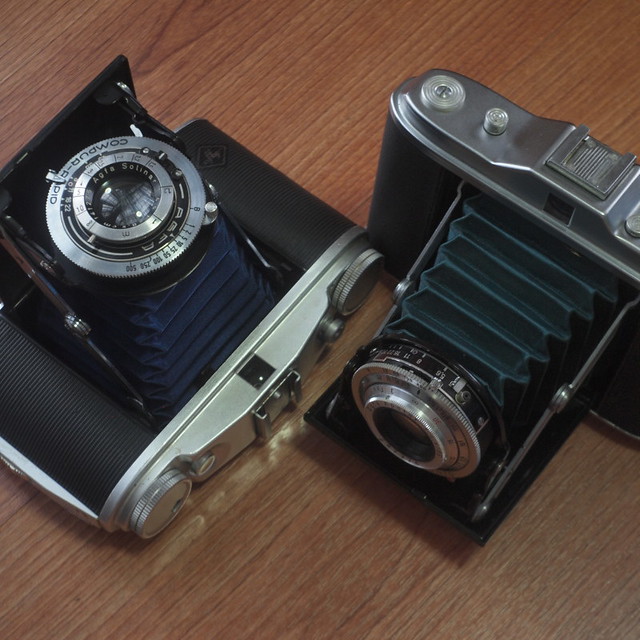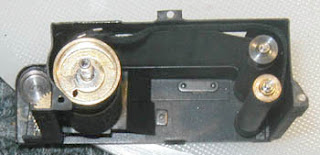[From the Archives, ca. 2005]
 |
| Leica II ca. '32 after restoration |
As you can see below this camera was in a very
sad state lacking the vulcanite cover when I acquired it. The shutter worked
only because it was oozing with a WD40 type lubricant mixed with a lot of grime
and dirt. Initially I was stumped by the lack of a film take up spindle and spool.
Fortunately a short spindle from a Fed 2 bolts on in tandem with a Zorki film spool.
 |
| before restoration |
partial disassembly of a
Leica II
Before disassembly the lens flange to film
plane distance [28.8mm] was measured using a caliper just to make sure it has not been tampered. Once this is determined, take note of the location of the shims so
that the register will be exactly at the same specification upon reassembly.
The shims on a Leica are mostly metal with a small piece here and there of
vellum like thin paper for fine tuning. I never encountered metal shims on an
FSU clone, just paper.
I set the body aside and traced a paper
pattern to use as a template for a new cover using Micro
Tools #4040 leatherette. The body was cleaned
with ultra fine sandpaper moistened with lighter fluid to insure proper
adhesion.
Dirty winding gear set,
ready for lighter fluid immersion and blasts of air, Fed short replacement
spindle standing by for trial. A Zorki spindle is also a bolt on option.
I immersed all the gears in lighter fluid
followed by generous bursts of compressed air. Once they were clean I sparingly
greased the gear set with Castrol GTX to insure smooth winding.
The shutter curtains looked light tight and
only needed cleaning. Making sure the curtain and ribbon attachments do not get
contaiminated with oil, I carefully lubricated the rollers and curtain drum
spindle using a syringe loaded with watchmaker's oil. After all these steps
were accomplished I tensioned the curtains and installed it back to the top
super structure.
shutter crate and top
plate ready for reassembly
This is the most difficult step in the
reassembly of the shutter in any Leica derived focal plane shutter system.
Mating the coupling pin [above - 1] to the
curtain drum hole [2 - below] as well as shooting the roller pins [1 - below]
to the corresponding holes [2- above] of the top superstructure.
Aside from that, the curtain drum gear needs
to couple with the release gear [3] underneath in the wound position at
the same time the laths need to be overlapped [4] approximately 180 degrees
opposite the drum hole or else the shutter will not work properly. This picture
approximates the proper orientation and the shutter worked. Of course it is
assumed that the curtains were properly installed.
All of these have to be done in one shot and
requires practice, time and a lot of patience!
Before inserting the shutter crate and top
assembly to the body I did the TV shutter test to make sure that
the speeds are pretty accurate. Usually if the 1/500 looks good all the other
speeds will fall into place. I also use an M3 as sound and visual reference.
Although the RF patch was usable it was not
bright enough under most lighting conditions so the beam splitter mirror was
replaced and the RF and VF cleaned.
Please note that I do not endorse repainting
or even retouching a black enamel Leica II. Brassing adds character and
mystique to the camera which is a testament to the history of pictures it has
taken. Even the finest repaint job will not achieve record breaking prices
at Christie's.
Here are some details that show the Barnack
heritage of FSU clones
under the RF cover
 |
| Fed 1d - soldered eyepiece tunnels |
Zorki 1d - eyepiece tunnels removable secured
in place by RF cover back screw
Leica II - eyepiece tunnels threaded or
secured by screws
Leica II shutter crate is made out of sheet
metal [early Feds are similar] more fragile and can easily bend when detached
but once assembled it is a rigid structure
Zorki 1d die cast shutter crate
Zorki 1d shutter body
The Fed and Zorki are undoubtedly reverse engineered
versions of the Leica II without the close tolerance precision of Teutonic
engineering. It is amazing how the Soviets kept the same basic Barnack design
in production with touches of their ingenuity sprinkled almost
contemporaneously in the early 1930s until the early 1990s, 30 years after
Leica stopped LTM production.
Leica II + Summar 50/2 lens test shots
Agfa
APX100 @ EI200 souped in Diafine
















































